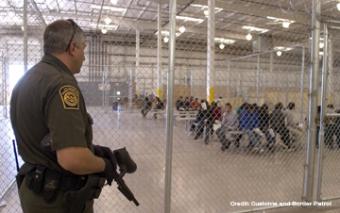Deportations/Returns
Recent Activity
A webinar examining the outreach and initiatives by educational institutions and other community stakeholders seeking to support the education and training success of grantees of the Deferred Action for Childhood Arrivals program.
After years of gridlock, increasing pressure from immigrant advocates, and several delays in 2014, President Obama announced sweeping executive actions to provide deportation relief to as many as 5.2 million unauthorized immigrants in the United States. The plan sparked a political firestorm among Republicans who vowed to use all tools at their disposal to block the actions, ensuring that immigration will continue to be a flashpoint for the remainder of the president's term.
In 2014 governments in Europe, North America, and Australia reacted to significant mixed flows of humanitarian, economic, and family-stream migrants with a range of new policies. These came as some migrants presented themselves to authorities for processing rather than trying to evade U.S. or European border controls, with the knowledge that backlogs and little political will for the removal of vulnerable populations might allow them to stay for extended periods.










